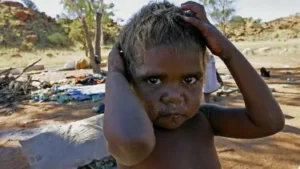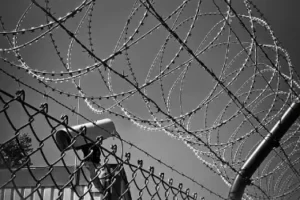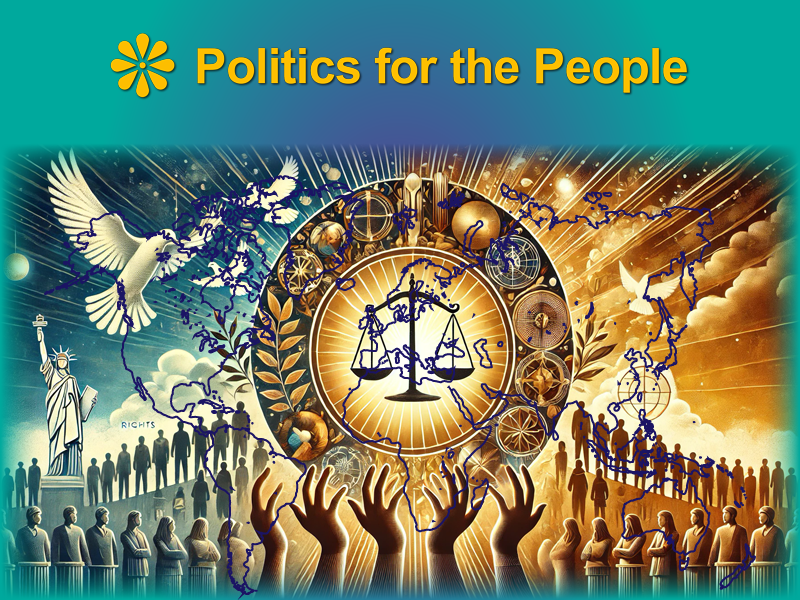Introduction: Confronting Domestic Challenges for Global Leadership
Human Rights Challenges
Both the United States and Australia are recognized for advocating against human rights abuses worldwide. However, they often face criticism for discrepancies between their international advocacy and their domestic human rights records. This article examines why addressing these internal issues is crucial for them to lead credibly on the global stage.
Historical Context: Interventions and Internal Struggles
U.S. and Australia’s Military Footprint
The military interventions by the United States and Australia, often justified as efforts to spread democracy and protect human rights, have frequently resulted in significant civilian casualties and long-term regional instability. These actions raise questions about the sincerity of their human rights advocacy, as they often contradict the democratic values they aim to promote.
Racial and Ethnic Challenges at Home
Overview of Racial and Ethnic Disparities
In the United States and Australia, longstanding racial and ethnic disparities manifest in various sectors including employment, education, healthcare, and within the justice system. These disparities are not merely remnants of past injustices but are continually perpetuated by existing policies and social attitudes that often favour the majority ethnic groups while marginalizing minority communities.
Systemic Racism in the Justice System
In the U.S., systemic racism in the criminal justice system is evident in the disproportionate rates of incarceration among African Americans and Latinos compared to their white counterparts. Factors contributing to this disparity include racial profiling, sentencing disparities, and unequal treatment by law enforcement agencies. Similarly, in Australia, Indigenous communities face higher rates of imprisonment and are more likely to die in custody than non-Indigenous people, highlighting systemic issues within the criminal justice system.
Educational and Economic Disparities
Racial and ethnic disparities extend into the education sector, where minority communities often have access to lower quality education. In the U.S., schools serving predominantly African American and Hispanic students receive significantly less funding than those serving predominantly white students. This inequity affects the quality of education offered, perpetuating a cycle of poverty. In Australia, Aboriginal and Torres Strait Islander peoples also face challenges in accessing quality education, which impacts their economic opportunities and perpetuates socioeconomic disparities.
Health Inequities
Health disparities are another critical issue, with minority groups experiencing poorer health outcomes than their majority counterparts. In both countries, these communities suffer from higher rates of chronic diseases such as diabetes and heart disease and have lower life expectancies. Factors contributing to these disparities include limited access to healthcare services, cultural barriers, and lower rates of medical insurance coverage.
Housing and Segregation Issues
Racial and ethnic minorities in both the U.S. and Australia also face challenges in housing, characterized by discriminatory practices such as redlining and gentrification that limit their options to live in areas with better resources. This segregation not only affects their access to quality housing but also isolates them from job opportunities and social services, further entrenching economic inequalities.
Policy and Social Initiatives
Addressing these challenges requires comprehensive policy reforms and robust social initiatives aimed at dismantling systemic barriers and promoting inclusion. This includes reforms in policing and criminal justice, investment in education and healthcare in marginalized communities, and the implementation of fair housing practices. Social initiatives could involve community programs that enhance cultural competence and promote diversity in various sectors.
The China Conundrum
Criticism Beyond Borders

Both nations are vocal critics of China’s treatment of ethnic minorities, particularly the Uighurs in Xinjiang. However, this criticism is often perceived as influenced by geopolitical interests rather than solely humanitarian concerns, raising questions about the consistency and sincerity of their human rights diplomacy. West’s Media on China: Propaganda or Reality?
Guantanamo Bay and Australia’s Offshore Detention
Controversial Detention Practices
The Guantanamo Bay detention camp and Australia’s offshore detention centers on Manus Island and Nauru have been internationally condemned for their harsh conditions and violations of human rights standards. These practices not only inflict severe mental and physical trauma on detainees but also severely tarnish the international reputation of both nations.
Indigenous Rights and Historical Wrongs
Ongoing Indigenous Struggles

The treatment of Indigenous peoples, such as Native Americans in the United States and Aboriginal and Torres Strait Islander peoples in Australia, is a legacy of systemic discrimination, dispossession, and neglect. These communities have faced centuries of injustice, from the violent seizure of their lands and resources to the ongoing erosion of their cultures, languages, and identities. Despite limited progress in some areas, the fight for land rights, cultural preservation, and access to essential services is still an uphill battle, underscoring the need for profound and sustained domestic human rights reforms.
Land Rights and Sovereignty
One of the most significant struggles for Indigenous peoples is the fight for land rights and sovereignty. In both the U.S. and Australia, colonization resulted in the widespread displacement of Indigenous populations, stripping them of their ancestral lands and severing deep cultural and spiritual connections to the land.
Today, many Indigenous groups continue to seek the return of these lands or compensation for their loss. In Australia, landmark legal cases like the Mabo decision (1992), which recognized native title, and later legislation, have marked progress, but access to land is still uneven and fraught with bureaucratic and political hurdles. Similarly, in the U.S., treaties signed with Native American tribes are often ignored or violated, leaving tribal nations with fragmented territories and limited control over their natural resources.
Cultural Preservation
Cultural preservation is another critical area of struggle for Indigenous communities. The forced assimilation policies of the past, such as residential schools in the U.S. and Australia, looked to eradicate Indigenous languages, traditions, and identities, leaving lasting scars on these communities.
Efforts to revitalize Indigenous cultures today often face challenges such as inadequate funding, a lack of institutional support, and persistent racism. Programs aimed at teaching Indigenous languages, protecting sacred sites, and promoting traditional practices are essential to supporting these rich cultural heritages, yet they often struggle to gain the resources and recognition they need.
Access to Basic Services
Indigenous peoples in both nations experience significant disparities in healthcare, education, housing, and employment, reflecting systemic neglect and underfunding. In Australia, Aboriginal and Torres Strait Islander peoples have a life expectancy approximately eight years shorter than non-
Indigenous Australians, with higher rates of chronic illnesses and limited access to culturally proper healthcare. Similarly, Native Americans face disproportionately high rates of poverty, diabetes, and substance abuse, often worsened by inadequate healthcare services on reservations and in urban areas. Access to quality education is another pressing issue, as many Indigenous children attend underfunded schools that do not incorporate Indigenous perspectives or meet their cultural and linguistic needs.
Systemic Racism and Justice
Systemic racism and injustices within the legal and political systems further hinder Indigenous progress. Indigenous peoples are overrepresented in prison populations in both the U.S. and Australia, reflecting discriminatory policies and practices within law enforcement and judicial systems. In Australia, Aboriginal and Torres Strait Islander people constitute around 3.8% of the population but 30% of the prison population.
Similarly, Native Americans in the U.S. experience incarceration rates far higher than the national average, often linked to entrenched socioeconomic disadvantages and systemic biases.
The Path to Reconciliation and Reform
Addressing these ongoing struggles requires comprehensive reforms that go beyond symbolic gestures to deliver real, measurable change. Recognizing Indigenous sovereignty through meaningful treaties, ensuring the protection of land rights, and providing adequate resources for cultural revitalization are critical steps. Governments must also commit to ending disparities in health, education, and housing by working closely with Indigenous communities to develop tailored, culturally appropriate solutions.
Additionally, addressing systemic racism demands the reform of justice systems to end discriminatory practices, alongside greater representation of Indigenous voices in political and decision-making processes. In Australia, proposals such as the Uluru Statement from the Heart, which calls for constitutional recognition and a Voice to Parliament, offer a pathway to genuine reconciliation. Similarly, in the U.S., greater enforcement of treaty rights and investment in tribal self-governance are essential for empowering Native American communities.
The fight for Indigenous rights is a fight for justice, equity, and the recognition of shared humanity. By confronting historical wrongs and committing to systemic change, both nations can take meaningful steps toward addressing the legacies of discrimination and creating a future that honours the rights, cultures, and contributions of their Indigenous peoples.
Immigration and Asylum Policies
Policies Under Scrutiny

The U.S. and Australia’s immigration policies, including the U.S.’s family separation policy and Australia’s ‘Stop the Boats’ policy, have faced global criticism for their harsh treatment of asylum seekers and refugees. These policies underscore the inconsistencies in their human rights agendas and call for urgent reform.
Moving Towards Genuine Reform
The Path to Consistent Advocacy
Human rights reforms refer to the efforts made to improve and protect the rights and freedoms of individuals. These reforms aim to address issues such as discrimination, inequality, and violations of basic human rights. Through legislative changes, policy developments, and international cooperation, human rights reforms seek to create a more just and equitable society for all.
For the U.S. and Australia to champion human rights effectively, they must adopt transparent, inclusive policies that rectify domestic injustices and support societal healing. Key strategies include:
1. Establishing Transparent Oversight: Implement independent bodies to monitor and ensure government alignment with human rights standards.
2. Community Engagement and Empowerment: Involve marginalized communities in the policymaking process through structured dialogues and partnerships.
3. Legal and Legislative Reforms: Overhaul criminal justice and immigration laws to comply with international human rights norms.
4. Education and Awareness Programs: Launch educational initiatives that promote public understanding of human rights issues.
5. Supporting International Human Rights Mechanisms: Actively participate in and adhere to the guidelines of international human rights bodies.
6. Restorative Justice Approaches: Implement practices that focus on repairing the harm caused by offenses and promote societal healing.
7. Economic and Social Policy Adjustments: Address the root causes of human rights abuses with policies aimed at reducing poverty and improving access to education and healthcare.
Conclusion: Leading by Example
To effectively lead in global human rights advocacy, the U.S. and Australia must ensure their domestic policies reflect the values they promote internationally. Addressing their internal human rights challenges is essential for their integrity and leadership on the world stage.
Call to Action: Join the Conversation
What reforms should the U.S. and Australia implement to enhance their human rights records at home? Engage with us in the comments below and share your insights on how these nations can better lead by example in the realm of human rights.
References:
Human Rights in Australia 2022: https://www.amnesty.org/en/location/asia-and-the-pacific/south-east-asia-and-the-pacific/australia/report-australia/
Human Rights Watch 2022: https://www.hrw.org/world-report/2022/country-chapters/australia
Does Australia violate human rights?: https://www.nswccl.org.au/australia_violates_human_rights
Australia’s human rights record ’embarrassing’ Amnesty International says:
https://www.sbs.com.au/news/article/australias-human-rights-record-embarrassing-amnesty-international-says/s90w2ihar
Human Rights United States of America: https://www.amnesty.org/en/location/americas/north-america/united-states-of-america/report-united-states-of-america/
Human Rights Watch United States: https://www.hrw.org/world-report/2022/country-chapters/united-states
Hypocrisy and Human Rights Abuse In The Land Of The Free: https://www.humanrightspulse.com/mastercontentblog/hypocrisy-and-human-rights-abuses-in-the-land-of-the-free
The global backlash against human rights: https://www.ohchr.org/en/statements/2018/06/global-backlash-against-human-rights

